Normal Poems worksheets activities for Ages 4-7
7 filtered results
-
From - To
Discover our engaging Normal Poems worksheets designed for children aged 4-7! These fun and interactive activities provide a delightful way for young learners to explore poetry while developing essential reading and language skills. Filled with vibrant visuals and captivating themes, our worksheets encourage creativity and imagination. Children can enjoy various tasks, including rhyming, filling in missing words, and illustrating their favorite poems. These activities not only enhance literacy but also foster a love for poetry. Perfect for educators and parents alike, our Normal Poems worksheets are an excellent resource for making learning enjoyable and memorable for your little ones!
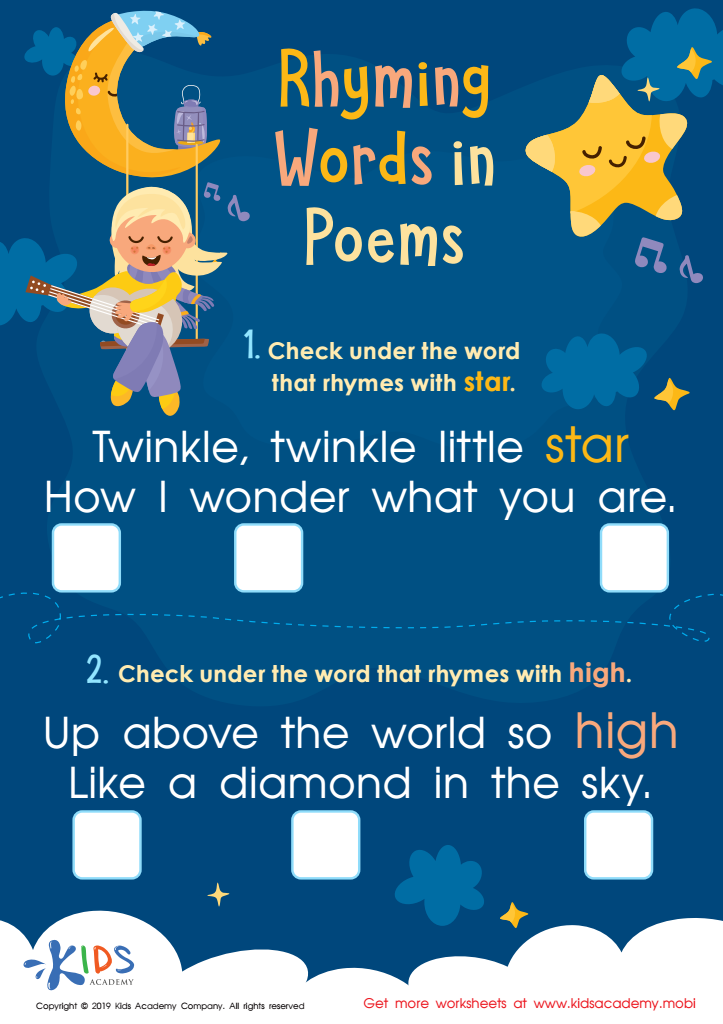

Rhyming Words in Poems Worksheet
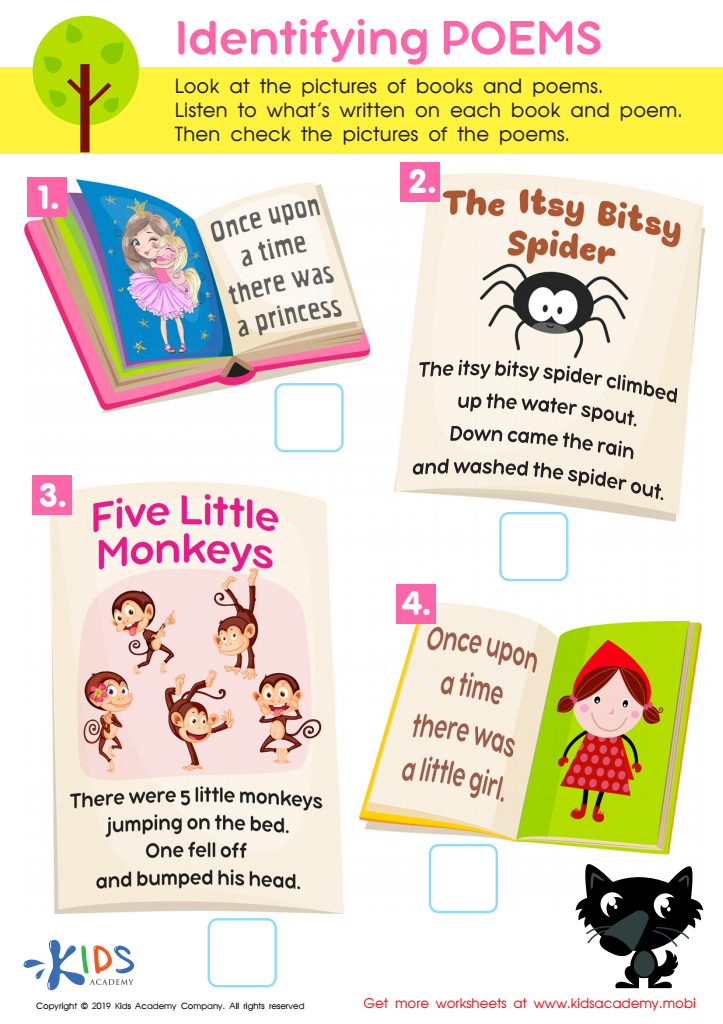

Identifying Poems Worksheet
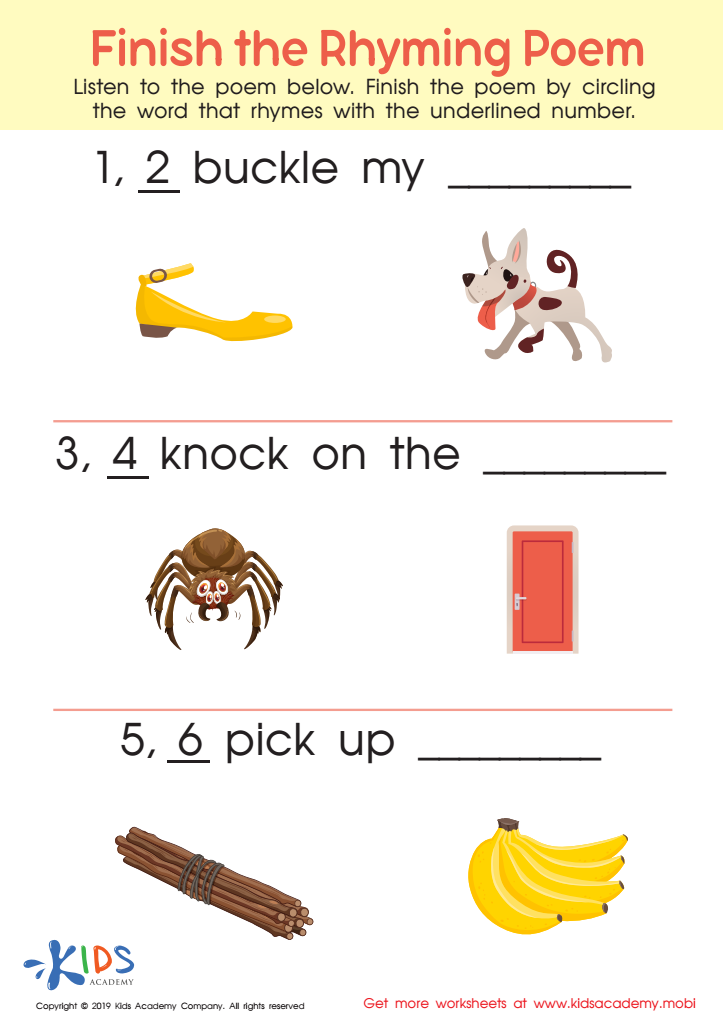

Finish Rhyming Poem Worksheet
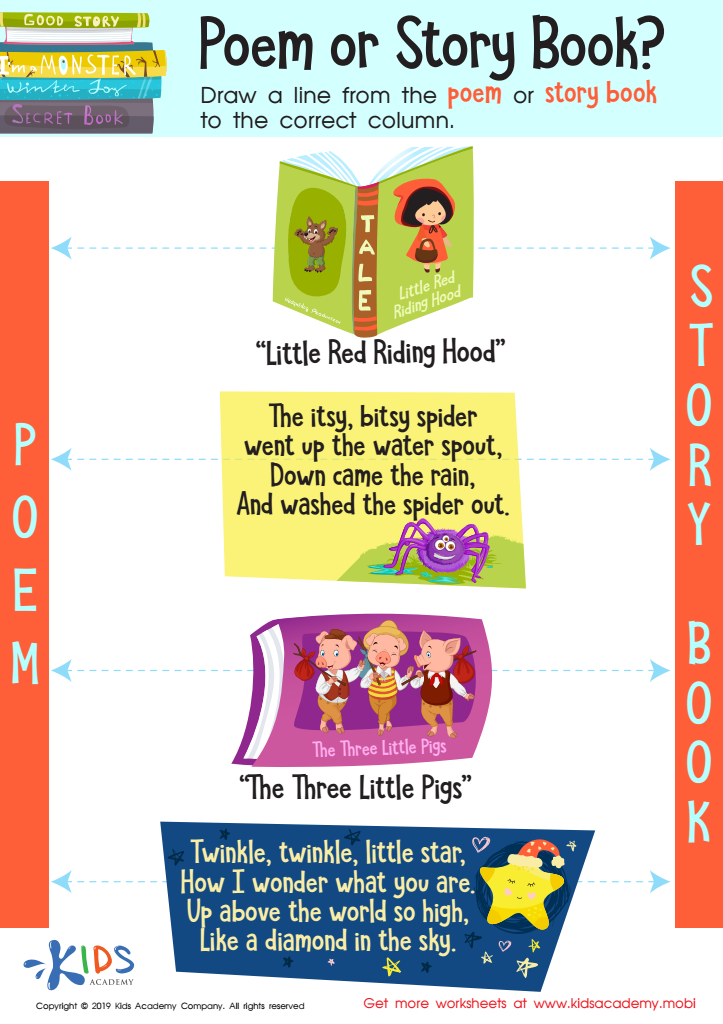

Poem or Story Book? Worksheet
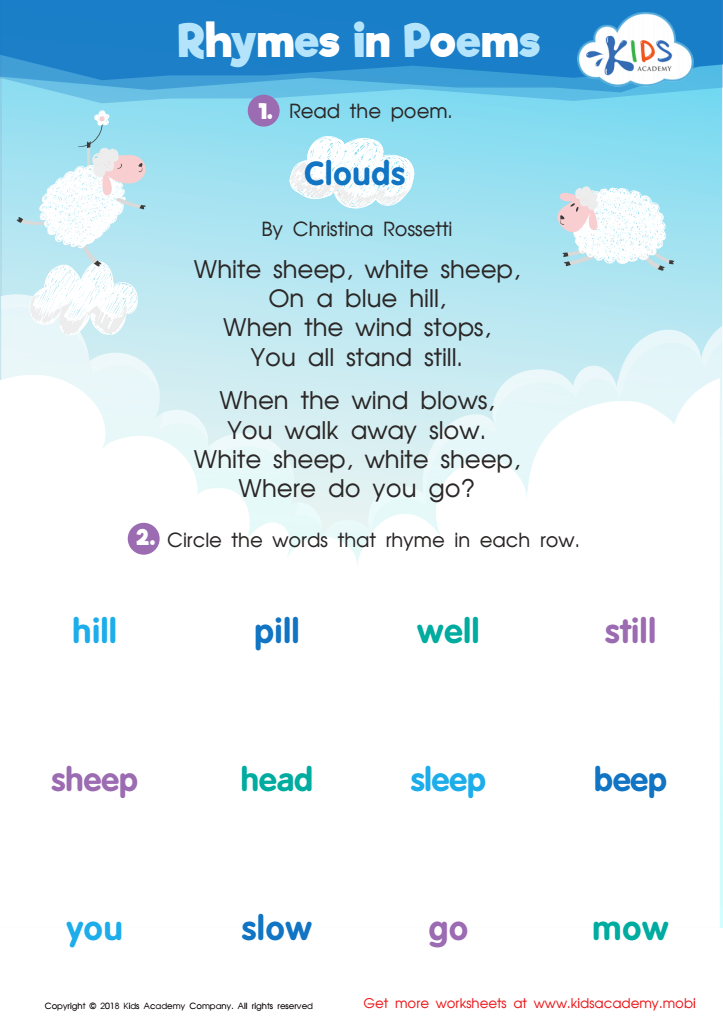

Rhymes in Poems Worksheet
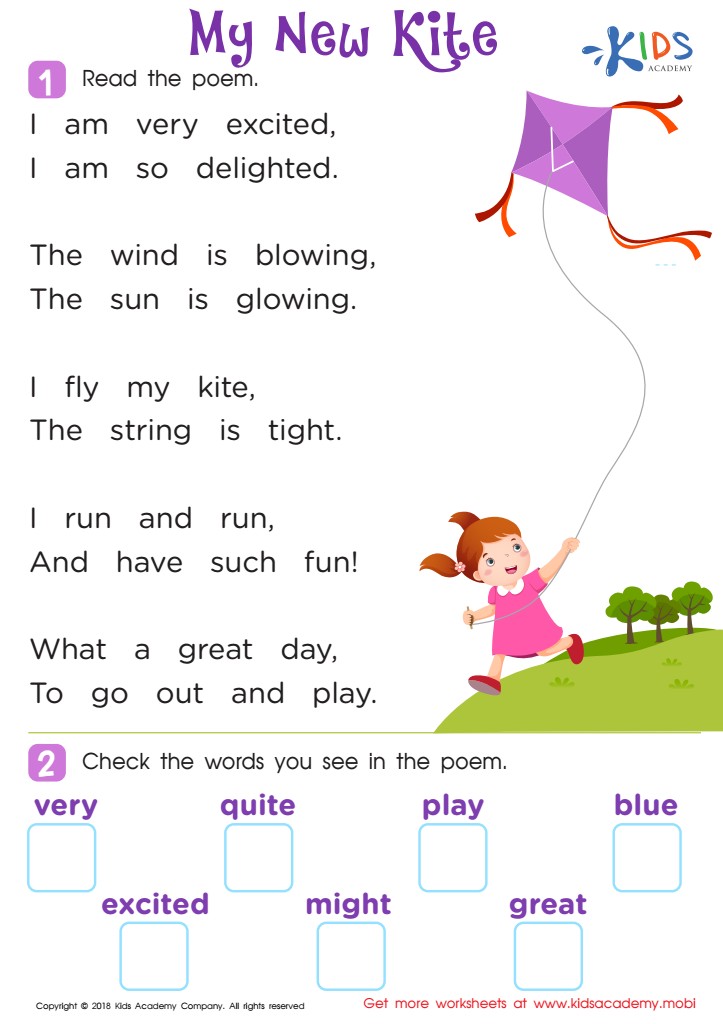

Poem: My New Kite Worksheet
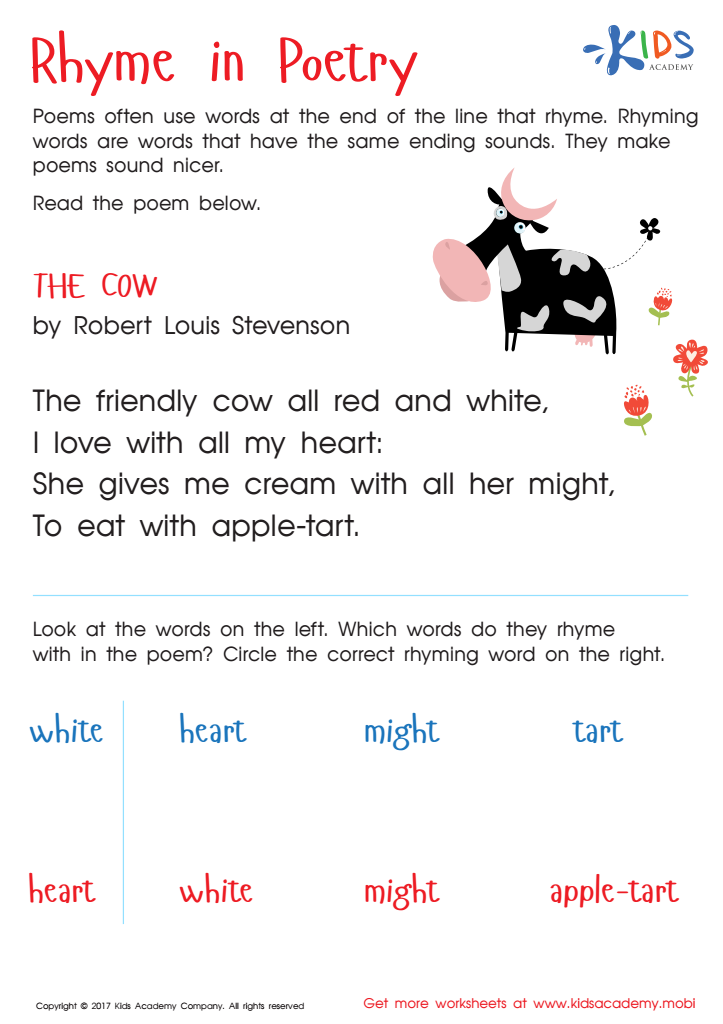

Rhyme In Poetry Worksheet
Parents and teachers should care about Normal Poems activities for ages 4-7 because they play a crucial role in early literacy development and emotional expression. Poetry stimulates imaginative thinking, encouraging children to play with language and sounds, which enhances vocabulary and phonemic awareness. Engaging with normal poems introduces young learners to rhythm, rhyme, and patterns, making reading enjoyable and more accessible.
Moreover, normal poems offer a unique avenue for children to express their feelings and ideas in a safe and creative way. These activities can foster emotional intelligence, allowing kids to connect with their own emotions and understand those of others. Moreover, poetry activities promote fine motor skills when children write or illustrate their own poems, reinforcing learning through hands-on engagement.
Additionally, incorporating normal poems into the curriculum can strengthen the bond between parents, teachers, and children through shared reading and creative projects. Such collaborative involvement builds a love for literature early on, helping children grow into confident readers and communicators. Overall, normal poems activities are valuable tools for holistic development, encouraging cognitive, social, and emotional growth in young learners.

 Assign to My Students
Assign to My Students
















